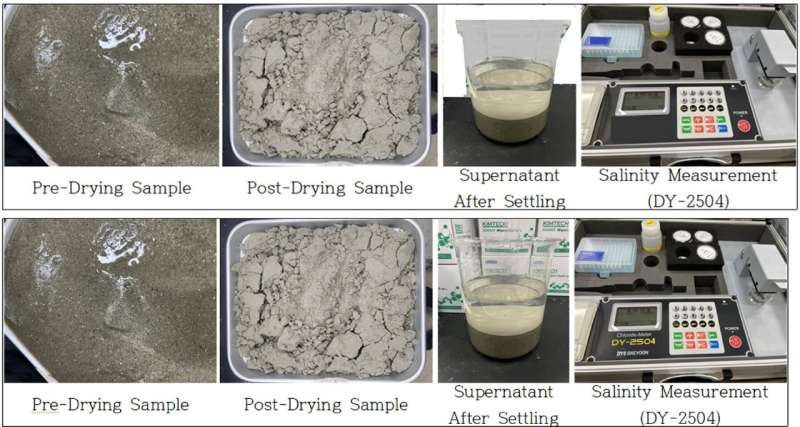Ultrasonic device efficiently removes salt from sea sand for construction use
The Korea Institute of Ocean Science & Technology (KIOST) has developed an ultrasonic washing device that effectively removes salt (NaCl) from sea sand. KIOST’s research and validation results have been published in Scientific Reports.
Sand is a vital material used in the construction of key social infrastructure such as roads, bridges, and harbors. However, as the collection of river sand becomes increasingly restricted or impossible, sea sand is being used as a substitute. Desalination is a critical process when using sea sand in construction.
If the salt is not properly removed, it can cause corrosion of the steel rebar embedded in reinforced concrete. This corrosion leads to premature deterioration and damage to the concrete structures, significantly compromising their structural integrity and safety.
The permissible salt content (salinity) of sea sand recommended by the Ministry of Land, Infrastructure and Transport for use as aggregate in construction is 0.04% or less.
Dr. Gil-Lim Yoon of KIOST’s Ocean Space Development and Energy Research Department has developed a novel ultrasonic desalination instrument that enables more effective removal of salt from sea sand. Its key technical features include: cavitation-driven ultrasonic washing, strong particle clearance from bubble collapse, enhanced penetration force, and non-contact cleansing using ultrasonic energy.
Even in confined spaces, this technology allows precise and rapid desalination, dramatically reducing both water usage and processing time.
Currently, salt in sea sand is removed by pouring a large volume of water over the sand. This traditional method requires about four tons of water to process just one ton of sea sand.
The ultrasonic method developed by KIOST effectively reduces the salt concentration in sea sand to 0.04% or less by first mixing the sea sand with water at a ratio of 1:2 and then treating the mixture with ultrasonic waves of 300W or higher for three minutes.
KIOST President Hyi Seung Lee stated, “This research is significant because it offers an innovative solution to the global shortage of river sand while ensuring structural integrity and economic feasibility. KIOST will continue to advance this technology to enable faster and more precise processing of large volumes of sea sand.”
More information:
Hyemin Hong et al, Prototype ultrasonic desalination instrument and its performance test, Scientific Reports (2025). DOI: 10.1038/s41598-025-12764-3
Provided by
Korea Institute of Ocean Science and Technology
Citation:
Ultrasonic device efficiently removes salt from sea sand for construction use (2025, August 19)
retrieved 20 August 2025
from https://techxplore.com/news/2025-08-ultrasonic-device-efficiently-salt-sea.html
This document is subject to copyright. Apart from any fair dealing for the purpose of private study or research, no
part may be reproduced without the written permission. The content is provided for information purposes only.

Comments are closed